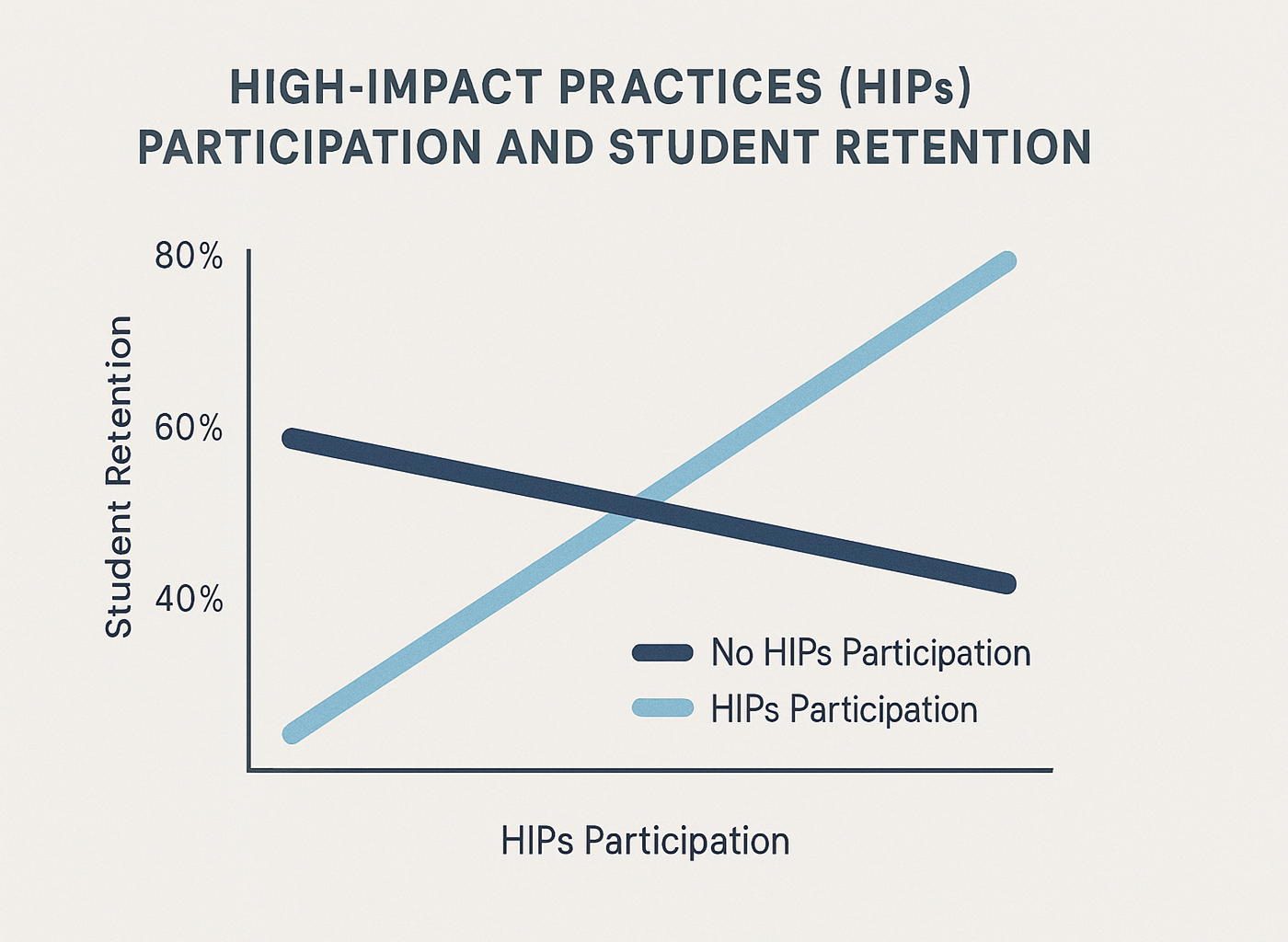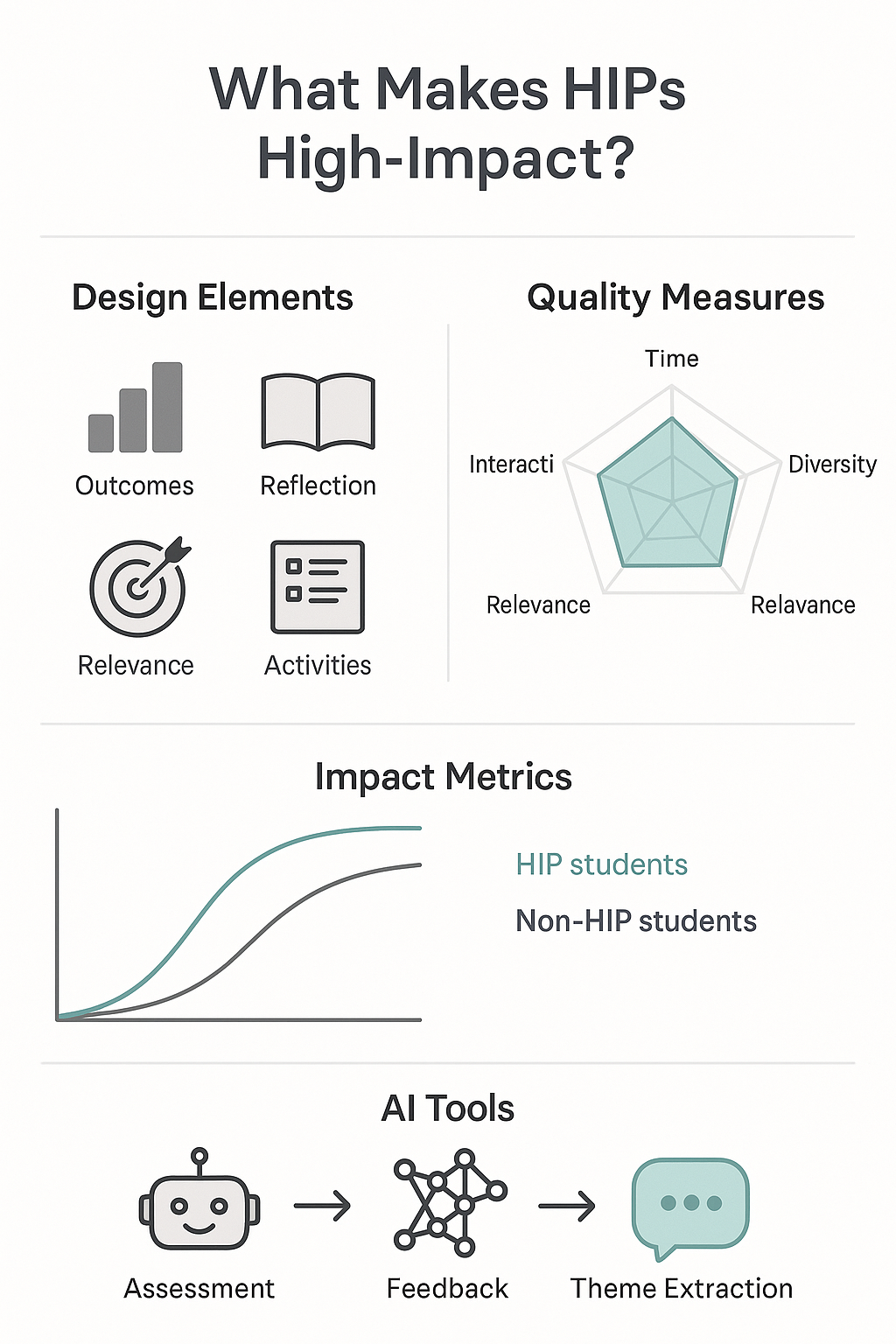
🎯 Designing for Impact: Making High-Impact Practices Truly High-Impact
Tips, Quality Measures, and Student Outcomes—Backed by Data & AI 📊🤖
🌟 Introduction
High-Impact Practices (HIPs) are more than just buzzwords—they’re powerful pedagogical tools that, when designed and implemented well, can transform student learning and success. But what does “done well” really mean? This week, we explore actionable design tips, quality measures, and how predictive models and AI (including LLMs) can help us understand and enhance their impact. Whether you’re just starting or refining your HIPs strategy, this post offers practical insights for every level.
✅ Best Practices & Tips for Designing & Evaluating HIPs
Here are five essential tips to ensure your HIPs are designed for maximum impact and measurable success:
1. 🎯 Intentional Design with Clear Learning Outcomes
- Align HIPs with Program Learning Outcomes (PLOs) and Course Learning Outcomes (CLOs).
- Use backward design to ensure activities support measurable outcomes.
- Example: A service-learning project should explicitly connect to civic engagement and critical thinking outcomes.
2. 🧠 Integrate Reflection & Metacognition
- Require structured reflection (journals, blogs, guided prompts).
- Encourage students to connect experiences to academic content and personal growth.
- Use rubrics to assess depth of reflection.
3. 📏 Use Quality Measures: “Done Well” Criteria
| Quality Dimension | Description | Tip |
|---|---|---|
| Time & Effort | Significant investment by students | Scaffold tasks over time |
| Interaction | Meaningful faculty/staff/student engagement | Include feedback loops |
| Diversity | Exposure to diverse perspectives | Use inclusive materials |
| Real-World Relevance | Authentic contexts | Partner with community orgs |
4. 📊 Leverage Predictive Models & Propensity Score Matching (PSM)
- Use PSM to compare HIP participants with matched non-participants.
- Predictive models (e.g., logistic regression, decision trees) can identify which HIPs most influence retention, GPA, or engagement.
- LLMs can assist in analyzing qualitative reflections at scale.
5. 🤖 Use LLMs to Enhance Assessment & Feedback
- LLMs can summarize student reflections, identify themes, and suggest rubric improvements.
- Use AI to detect gaps in alignment between HIP activities and learning outcomes.
📚 Case Illustration: Service-Learning in First-Year Writing
At UVU, a first-year writing course embedded a service-learning project with local nonprofits. Students wrote reflective essays and created digital portfolios.
- Design: Aligned with CLOs on communication and civic responsibility.
- Quality: Included structured reflection, peer feedback, and community presentations.
- Impact: PSM analysis showed a 12% increase in retention among participants.
- LLM Use: AI summarized 300+ reflections, identifying growth in empathy and writing fluency.

🧭 Closing Thoughts
High-Impact Practices are transformative—but only when thoughtfully designed and rigorously assessed. By aligning with outcomes, embedding reflection, and using data-driven methods like PSM and LLMs, we can ensure HIPs truly live up to their name. Next week, we’ll dive into LLM-powered rubric design and how AI can help faculty create more reliable and inclusive assessments.
❓ Question of the Week
How do you currently assess the quality of your HIPs—and what would you like to improve?
Share your thoughts, challenges, or ideas with your colleagues or in your next department meeting!

